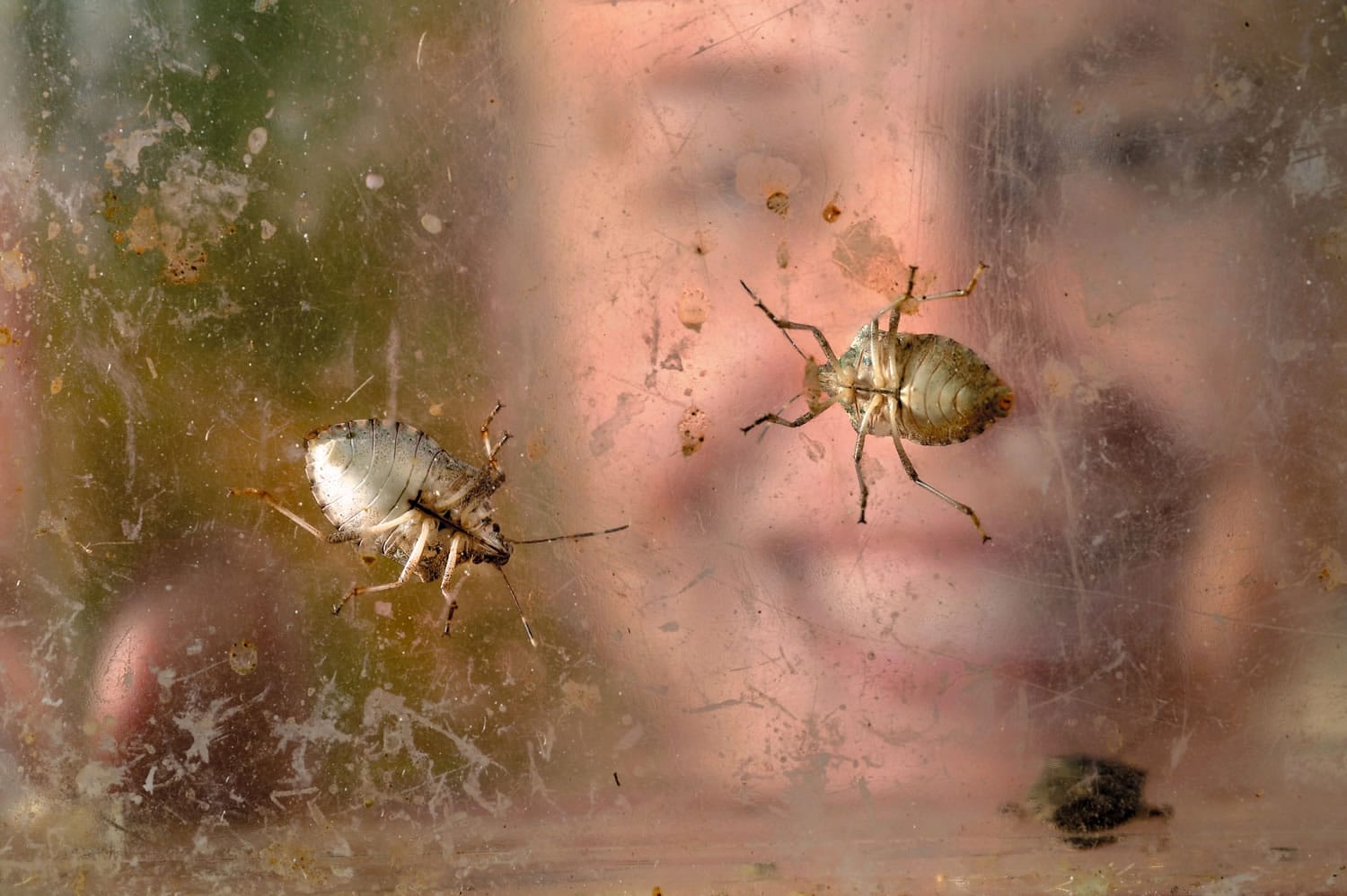ASHLAND, Ore. — Insect researchers are finding alarmingly high numbers of nonnative stink bugs in Ashland and elsewhere in the Bear Creek Valley, and warn of a potential infestation that could foul homes and damage orchards and vineyards.
After a handful of brown marmorated stink bugs surfaced last year, they’re popping up regularly this summer in Phoenix, Talent and Ashland. In Medford, the first of these bugs, commonly called Asian stink bugs, was discovered this month.
Research crews walking in downtown Ashland on Thursday shook stink bug after stink bug from maple and catalpa trees, where they found freshly laid eggs, and juvenile and adult bugs.
“I was blown away by this,” said Nik Wiman, an Oregon State University researcher seeking a way to control stink bugs. “I walked all of these neighborhoods and didn’t find anything last year. Then all of a sudden this year, they’re everywhere. It’s pretty impressive.
“The population is increasing fast,” he said. “I’d say we’re at the early states (of infestation), but it’s certainly coming.”
Unlike native stink bugs, these insects are household pests because they winter over in dwellings and release pungent odors that earn them their names.
But olfactory offenses aside, they are voracious fruit eaters and can cling to grapes at harvest time, with their odors altering wines if they’re crushed along with grapes.
“Oh my goodness, another pest we’ll have to deal with,” said Ron Meyer of Meyer Orchards near Talent.
Meyer said commercial growers have herbicides to deal with these nonnative bugs, but the insects also will cause problems for gardeners and organic farmers.
“We’ll control them,” Meyer said. “We’ll do what it takes to protect our crops, but it means it will probably be more expensive.”
Some Willamette Valley vineyards use machines to shake them off the vines before the grapes are processed, Wiman said.
Pesticides also can help. Or crop owners can hope that wasps lay their eggs inside the nonnative stink bugs’ eggs like they do Oregon stink bug eggs, Wiman said.
“It’s just a matter of them switching over,” Wiman said. “They have to adapt over time.”
Wiman and his assistant, Shannon Davis, set up traps in Ashland as the team seeks better trap baits.
The first of these bugs in Oregon was discovered in Portland in 2004, said Rick Hilton, an OSU Research and Extension Service biologist working with Wiman.
The stink bugs spread around the Willamette Valley, first invading homes, then backyard gardens. Last year, they began cropping up in farms, Wiman said.
Infestations have caused millions of dollars in agricultural damage in Eastern states such as Pennsylvania. That has state agriculturists worried.
“If it follows the pattern from back East, it’s very much a matter of when, not if, it gets into agriculture,” Oregon Department of Agriculture spokesman Bruce Pokarney said Thursday.
The roundish bugs are similar to native stink bugs, which don’t winter in houses and whose numbers are kept in check by predators such as wasps. The nonnative stink bugs have distinctly coal-colored antennas with a white band on them. Natives have brownish antennae and any bands look yellowish.
Anyone who believes they have found a brown marmorated stink bug should compare it to photographs at mailtribune.com/stink-bug. If they match, Wiman wants to hear about it, at bmsb@oregonstate.edu.



